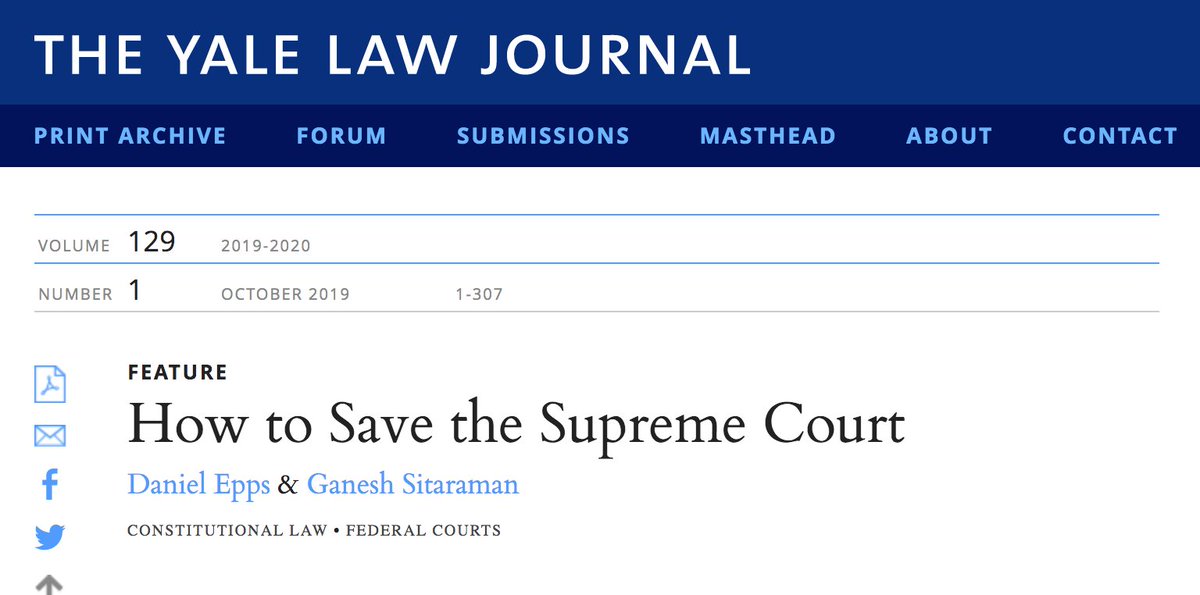
Professor of Law, @vanderbiltlaw. Formerly: @ewarren and @SenWarren. Author, "The Great Democracy."
How to get URL link on X (Twitter) App

https://twitter.com/GaneshSitaraman/status/1310565646221049857?s=20Class 2: Term Limits
https://twitter.com/GaneshSitaraman/status/1310928703405387783?s=20

 Many D’s are making the case for expanding the size of the Supreme Court in response to McConnell’s 1st blocking Garland and now pushing forward on ACB. A good overview from @danpfeiffer 2/ messagebox.substack.com/p/making-the-c…
Many D’s are making the case for expanding the size of the Supreme Court in response to McConnell’s 1st blocking Garland and now pushing forward on ACB. A good overview from @danpfeiffer 2/ messagebox.substack.com/p/making-the-c…
https://twitter.com/mjs_DC/status/11182374652723568662/4 We think the proposal does not require constitutional amendment. Judges often serve on other courts without presidential appointment - we offer examples in the paper.